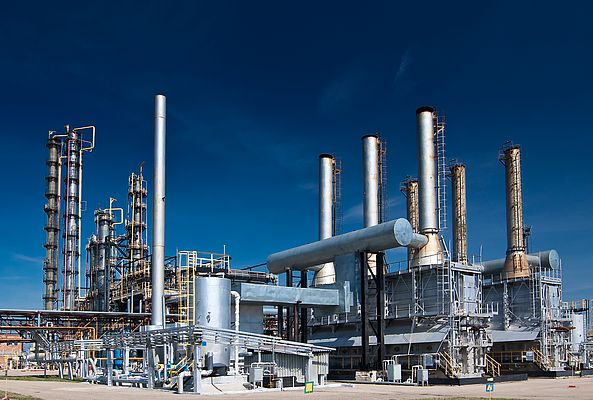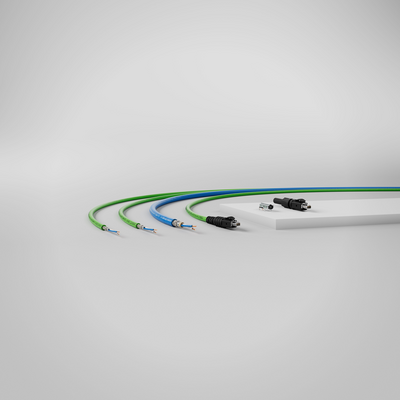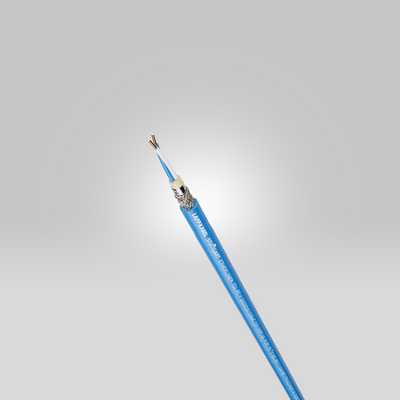Nowadays, factories are highly networked – which is the only way to exploit the benefits of Industry 4.0, such as increased process efficiency, higher quality or new business models for predictive maintenance. When it comes to networking technology, most firms opt for Ethernet. It offers high transfer rates and a unified protocol across all levels of the automation pyramid: from operating level with ERP and Office systems in offices to control cabinets at control level right down to - where exactly? At field level, where individual sensors report their switching signals and measured values, classic fieldbus systems still dominate, at least in the process industry. Like the PROFIBUS PA, for example, they are extremely slow with a maximum of 31.25 kBit/s and need gateways that will transfer fieldbus protocol into Ethernet protocol so that information at the top of the automation pyramid can be further processed. If you ask production experts why they are so stubbornly clinging to the old-fashioned solutions, you will mainly get the answer: because there are no connection systems for Ethernet that meet all requirements at field level.
In addition to a compact design and cable lengths of well over 100 metres, skeptics mainly point to the lack of explosion protection of these connections.
With Ethernet Advanced Physical Layer (APL for short), these objections no longer apply. Ethernet APL adds important properties to the Ethernet physical layer: it enables twoway communication over distances of up to 1000 metres at up to 10 Mbit/s and supplies connected devices with energy. Ethernet APL supports every Ethernet-based protocol. This is why several user organisations are working together on Ethernet APL, including the OPC Foundation and Profibus/Profinet International.
Intrinsically safe Ethernet
The process industry and companies with potentially explosive systems are particularly interested in Ethernet APL. For them, "normal" Ethernet was taboo in the past because it did not offer sufficient safety against flying sparks and fire. The new directive is based on this and sets high requirements for explosion protection.
This means that the amount of energy stored in the cable is limited and no sparks can be discharged. To this end, the electrical parameters for cables, such as capacity and inductance, are tight, and the shielding is designed to reliably block interference signals. In areas at a particularly high risk of explosion, the entire installation should be intrinsically safe. No sparks or fires are permitted whatsoever, even if the cable is cut through or if defective equipment is replaced during ongoing operation. IEC TS 60079-47, also known as 2-WISE, is significant here. The abbreviation stands for Two-wire Intrinsically Safe Ethernet. 2-WISE sets precise specifications for intrinsically safe Ethernet APL, both for technical properties of components and for the design, installation and documentation of a network.
Single-pair Ethernet cables are always the basis for Ethernet APL. SPE cables have only one core pair instead of four pairs, meaning they need less space, which makes installation easier in tight machines. These two cores are also used to supply power to connected devices.
Blue is for APL
LAPP is one of the pioneers in Single Pair Ethernet and is involved in Ethernet APL in the user committees. The leading provider of integrated solutions and branded products in the field of cable and connection technology offers two cables specifically for Ethernet APL: ETHERLINE® T1L Y FC 1x2x18/1 AWG and ETHERLINE® T1L Y 1x2x18/7 AWG. Both cables meet ISO/IEC 11801 and EN 50173 and the transmission properties in accordance with IEC-61156-13CD. They are also UL-certified, making them suitable for use in North America – a major advantage for export-oriented companies. Suitable for distances up to 1000 meters, they are flame retardant, UV and oil resistant. Both can supply devices with a power of up to 92 watts via Power over Dataline (PoDL). Both have the Fast Connect design developed by LAPP, meaning they can be stripped and assembled very easily. The only difference is ETHERLINE® T1L Y FC 1x2x18/1 AWG has conductors made of solid wire for fixed installation, while ETHERLINE® T1L Y 1x2x18/7 AWG, with its seven-wire conductor structure, is suitable for occasional mobile use. To ensure that the cables are suitable for use in practice, they were developed and jointly tested according to the requirements of a leading German chemical company.
On the outside, the two cables differ from conventional Ethernet or Profinet cables due to their blue sheath, which is defined in the directive for Ethernet APL. There are also minor internal differences compared to conventional SPE cables. Core diameter, stranding of the twisted pair, insulation thickness – several parameters had to be adjusted to meet the increased requirements for intrinsic explosion protection.
“Harmonising all these parameters in such a way that they meet the requirements for Ethernet APL is an art,” says Christian Illenseer, Product Manager for Industrial Communication at LAPP. For Mr Illenseer, when they are used in as many different application scenarios as possible, the wheat is really separated from the chaff.
Comprehensive certification means the two cables from LAPP are for universal use, for example in an open cable tray next to a power cable. Christian Illenseer advises companies, especially from the process industry, as well as installers to now look at Ethernet APL, as it brings useful innovations for greater safety in networking at field level: “Ethernet APL is an upgrade for field level that brings more power and more opportunities for digitalisation to the process industry while simultaneously ensuring maximum safety.”




















